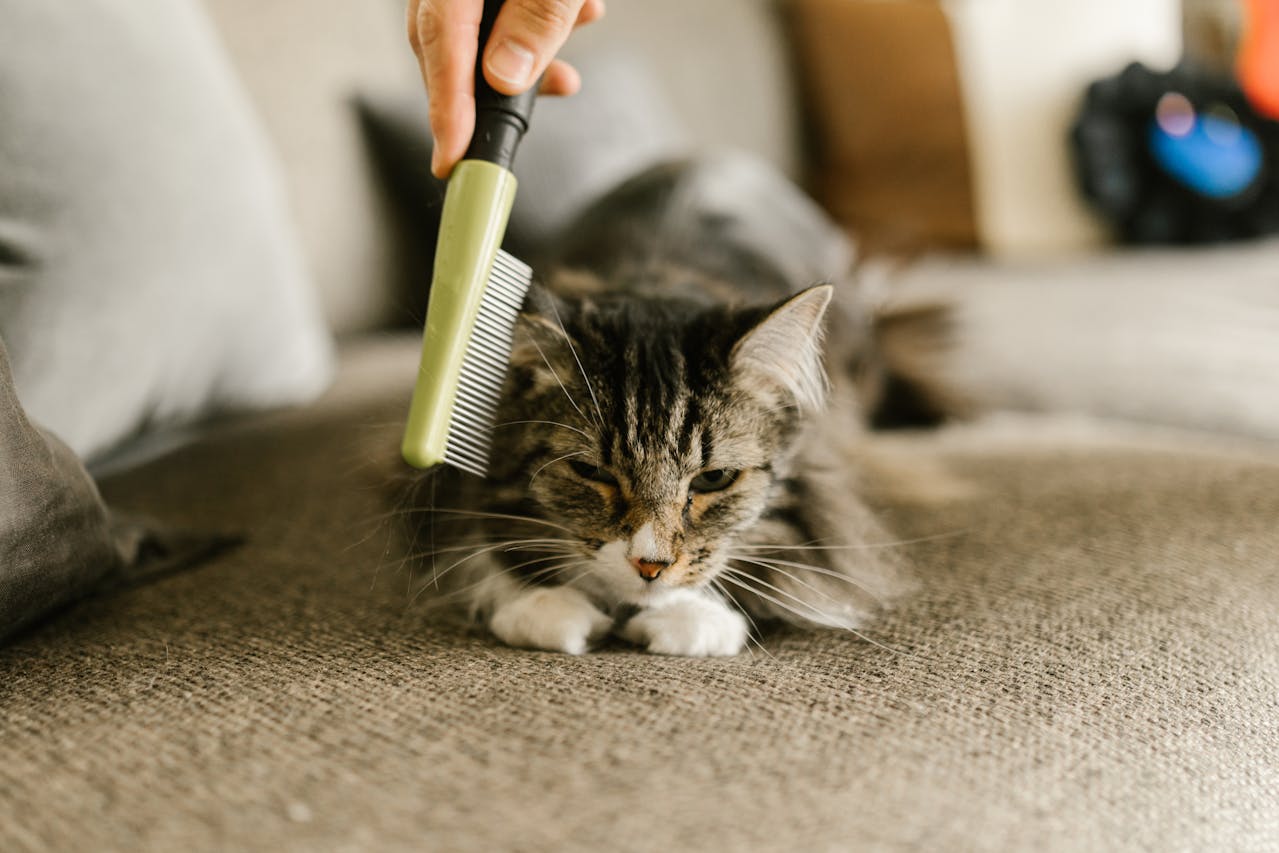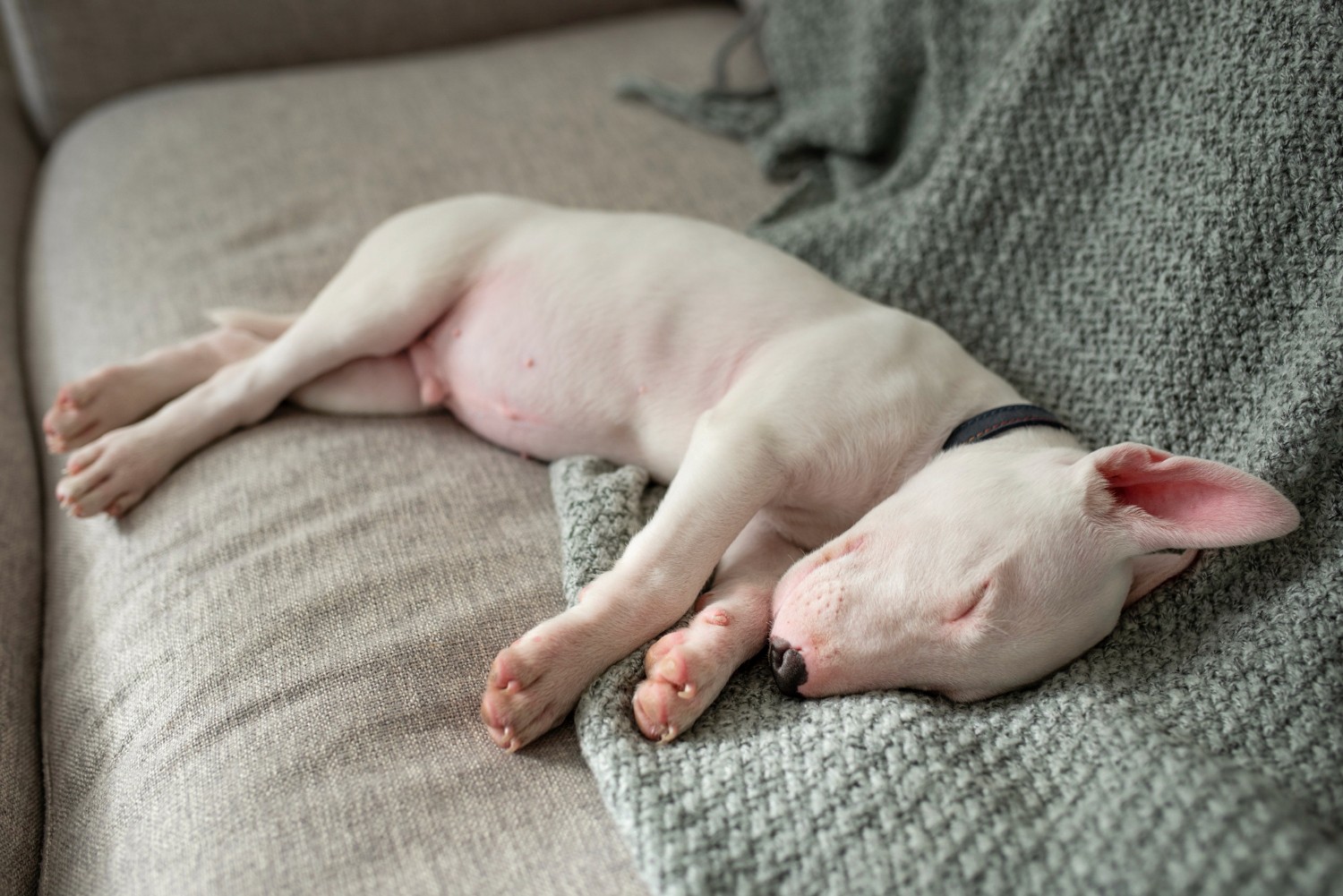Cats
Jul 18, 2025
How often should cats groom themselves? It’s a question many pet owners ask, especially when they see their feline friends cleaning meticulously for hours. Cats are known for being exceptionally clean creatures.
In fact, they can spend up to half of their waking hours grooming themselves, carefully cleaning, nibbling, and attending to each strand of fur. That amounts to approximately thirty to fifty percent of their day dedicated to personal hygiene. Imagine allocating that much time to your own grooming routine!
But if cats are already so adept at maintaining their cleanliness, do they really need our help with grooming? And if so, how often is enough? Let’s break it down.
Why Cats Groom Themselves (And Why It’s Not Always Enough)
Your cat’s tongue isn’t just for tasting treats. It’s a built-in grooming tool. Those tiny, hook-like structures called papillae act like a mini brush, helping to remove dirt, loose fur, and even the occasional parasite. They'll even use their paws like little washcloths to clean their face and ears.
Sometimes, you’ll spot them lounging in the sun afterwards, letting their fur dry and soak up some warmth. While it might seem like you never need to intervene, you may still wonder: how often should cats groom themselves to stay truly healthy and clean?
Grooming does more than just keep your cat looking good. It also helps:
Spread natural oils to keep their coat soft and a bit water-resistant
Control body temperature
Ease stress and anxiety
Prevent mats and skin irritation
Even the cleanest cat can’t do everything on their own. That’s where you help out.
How Often You Should Groom Based on Coat Type

Every cat is unique, and their grooming needs can vary depending on factors like fur length, age, health, and even personality. While some cats may be fine with occasional grooming, others need daily attention to stay comfortable and mat-free. Here’s a helpful breakdown based on coat type:
Short-Haired Cats
Breeds like the British Shorthair, Siamese, American Shorthair, and Bengal have sleek, low-maintenance coats that rarely tangle, but benefit from weekly grooming to reduce shedding and keep their fur healthy.
Why it’s important:
Reduces shedding and helps prevent hairballs
Keeps the coat shiny by spreading natural oils
Removes dirt, dander, and loose fur
Tools to use:
Soft-bristle brush or rubber grooming mitt.
Grooming glove for gentle, soothing sessions.
Long-Haired Cats
Breeds like the Maine Coon, Ragdoll, Persian, and Norwegian Forest Cat have thick, flowing coats that require daily grooming to prevent mats and tangles.
Why it’s important:
Prevents painful knots, especially around the belly, armpits, and hindquarters.
Keeps fur clean and free of debris.
Reduces hairballs and maintains overall coat health.
Tools to use:
A wide-toothed comb to gently detangle
Slicker brush to remove loose hair and prevent matting
Detangling spray or conditioner (optional)
Blunt-tipped scissors or grooming clippers for trimming tough spots (if needed)
Managing Your Cat’s Coat During Shedding Seasons
Cats shed year-round, but there’s often a noticeable increase in spring and autumn as they adjust to changing temperatures. This means more loose fur around your home, and more grooming needs.
Brushing your cat more frequently during these seasons helps reduce hairballs, prevents matting, and keeps their coat smooth and healthy. It also minimises fur buildup on clothes, furniture, and carpets, making life easier for both you and your cat.
During these high-shed times, understanding how often should cats groom themselves becomes even more essential to reduce hairballs and mats.
Indoor vs. Outdoor Cats: Grooming Needs Compared
A cat’s environment plays a significant role in how often and how thoroughly they need to be groomed. Indoor and outdoor cats face different conditions that affect their skin and coat. Understanding these differences can help you choose the proper grooming routine for your cat’s lifestyle.
No matter the setting, it's helpful to ask yourself: How often should cats groom themselves based on their living conditions?
Indoor Cats
Cats that live indoors typically stay cleaner since they’re not exposed to dirt, mud, or outdoor debris. However, indoor environments, especially those with heating or air conditioning, can lead to dry skin or a dull coat due to low humidity. These cats still need regular brushing to remove loose fur, reduce shedding, and stimulate healthy skin.
Outdoor Cats
Outdoor cats encounter more grooming challenges. They’re exposed to dust, insects, plant material, and changing weather conditions. Their fur can trap dirt or small debris, and they may get minor scratches or bites that are easy to miss under their coat. Regular grooming helps keep their coat clean and gives you a chance to check for ticks, fleas, or skin issues.
Older Cats Need Extra Help
As cats age, they lose some flexibility, which makes grooming harder for them. Arthritis or stiffness can stop them from reaching certain spots, like their back or hind legs, so you might notice greasy fur, dandruff, or areas they’ve missed. It’s a normal part of ageing, but they’ll need a little extra help from you.
As cats get older and less mobile, a lot of people start asking, how often should cats groom themselves when it gets harder for them to move around?
Brushing older cats more often keeps their coat clean and comfortable. Since their skin gets more delicate, use a soft brush and keep grooming sessions short and gentle. It’s all part of taking care of your cat as they age, and it’s also a good chance to check for any bumps or skin issues. A little extra care goes a long way in helping senior cats feel their best.
Hairless Cats Still Need Regular Grooming

Even though breeds like the Sphynx don’t have fur, they still require consistent grooming. Without a coat to absorb natural skin oils, their skin can become greasy, sticky, or prone to irritation and breakouts. To maintain healthy skin, give them regular sponge baths or use gentle pet wipes. Focus on areas that often collect dirt and oil, such as skin folds, ears, and around the nails, as these spots need extra cleaning and care.
Why Professional Grooming Can Make a Real Difference
Even the most attentive cat parents can benefit from a little expert backup. While brushing and nail trims at home go a long way, there are times when calling in a pro is the smarter option, especially if your cat is nervous, has a tricky coat, or just doesn’t like being handled.
Less Stress for Both of You
Let’s face it, some cats don’t love grooming. Whether it’s brushing, bathing, or nail clipping, things can quickly turn into a wrestling match. Professional groomers know how to handle all kinds of feline personalities with calm, gentle techniques. They’re also equipped with tools and know-how that make the process quicker, safer, and way less dramatic for everyone involved.
Spot Early Health Issues
Groomers don’t just make cats look good; they’re also great at noticing early signs of health issues. From hidden mats and skin irritation to fleas, ear infections, or odd lumps, they know what to look for. A quick flag from your groomer could lead to a timely vet visit and prevent bigger problems down the road.
Complete Care Package
Professional grooming isn’t just about brushing. A full session often includes:
Nail trimming
Ear cleaning
Teeth brushing
Full baths (when necessary)
Coat trims
These services require the right tools and gentle techniques to ensure your cat stays calm and comfortable. For professional care that covers all the essentials, explore expert cat grooming in Noble Veterinary Clinics, where your cat’s care is always a top priority.
Your Cat’s Grooming Journey Starts Here
While cats are great at keeping themselves clean, they still need a helping hand, especially as they age, shed, or face different lifestyle factors. How often should cats groom themselves is a common question among cat owners, especially when changes in behaviour or coat condition arise.
Regular grooming keeps their coat in top shape, reduces hairballs, and helps you spot any health concerns early. Whether your cat is long-haired, short-haired, indoor, outdoor, or even hairless, a routine that fits their needs can make a big difference.
At The Barking Lot, we understand that keeping your cat well-groomed isn’t always easy, but it makes a big difference. That’s why our team is here to help with gentle, professional care tailored to your cat’s unique needs, whether they’re a playful kitten or a senior snuggler.
Frequently Asked Questions
How often should I groom my cat at home?
It depends on your cat’s coat type. Short-haired cats usually need brushing once a week, while long-haired breeds may need daily grooming to prevent tangles and mats. When wondering how often should cats groom themselves, keep in mind that while most cats handle their hygiene well, older cats and those with special needs might require more frequent, gentle care.
Do indoor cats need grooming, too?
Yes, indoor cats still benefit from regular grooming. While they may stay cleaner than outdoor cats, they can develop dry skin or dull coats due to indoor heating or air conditioning. Brushing helps remove loose fur, spreads natural oils, and keeps their coat healthy.
Is it true that hairless cats require more maintenance?
Surprisingly, yes. Breeds like the Sphynx may not shed, but they produce natural oils that can build up on the skin. Without fur to absorb it, they require regular sponge baths and careful attention to skin folds, ears, and paws. When thinking about how often should cats groom themselves, it’s important to remember that hairless breeds still need consistent care to stay clean and comfortable, sometimes even more than long-haired cats.
When should I take my cat to a professional groomer?
If your cat has a dense or tangled coat, resists brushing, or you’re unsure how to trim nails or clean ears safely, it’s a good time to call in a pro. Wondering how often should cats groom themselves can help you spot when your cat might need extra support. Professional groomers are trained to handle even the fussiest felines and can spot early signs of skin problems or parasites you might overlook at home. It’s not just about looking good, it’s about keeping your cat healthy and comfortable.
Can grooming help with shedding?
Absolutely. Brushing your cat regularly, especially during peak shedding seasons, can make a noticeable difference. It helps remove loose fur before it ends up on your furniture (or in hairballs), keeps the coat sleek and healthy, and supports better skin circulation. Think of it as a simple habit that pays off in comfort for your cat and a cleaner home for you.





